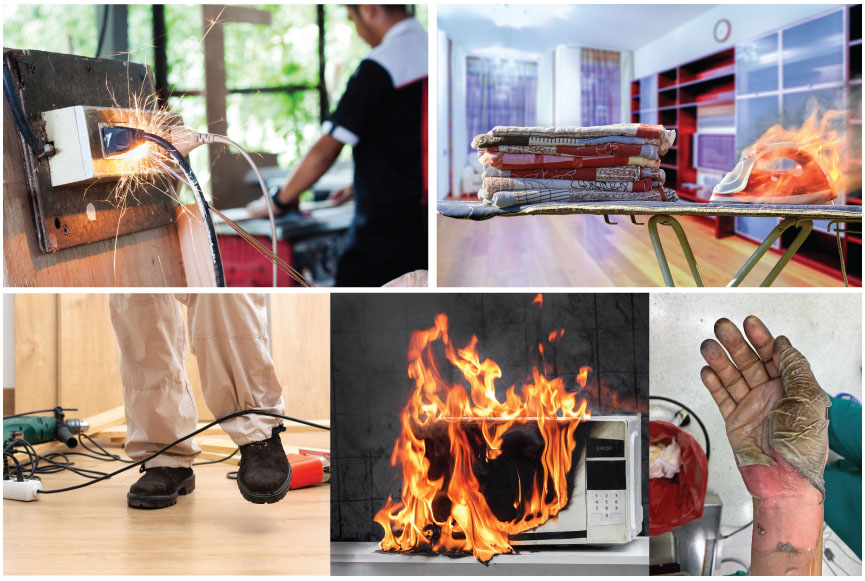
Electrical safety awareness is crucial; even if you don’t work with electricity exclusively, it’s a constant in your home and workplace that leaves you open to a number of possible risks.
May is electrical safety month, but how aware are you of the electrical risks around you? How is electricity dangerous, and how can you avoid being injured? Find out below.
Electrical Safety Hazards
There are several dangers when working with electricity, the main ones being:
- Electric shocks
- Burns from contact with live electrical parts
- Exposure to fire from faulty equipment
- Explosions caused by static electricity or fault apparatus.
You might think some of these more dangerous than others, but remember that all of them come on a scale of severity. Electric shocks, for example, can be deadly. What’s more, they can trigger other additional injuries, like falling from a height if you’re accessing the electricity from a ladder of scaffolding.
Electrical Equipment Hazards at Home
Even if you don’t work with electricity, electricity runs through your home and in your workplace, so it’s still important to know whether you’re properly equipped with the relevant knowledge. These are our top tips for staying safe around electricity:
Keep Electrical Items Away from Water
Make sure that any liquids are kept at least five feet away from electrical items and sources at any time. If possible, install Ground Fault Circuit Interrupters (GFCIs) to protect against line-to-ground faults.
Keep Electrical Equipment Tidy
Make sure your electrical equipment is properly installed, and that any cables are kept tidily out of the way to avoid trip hazards or being chewed on by pets. This includes child-proofing any sockets where necessary with outlet covers to avoid electrocution.
Know the Basics
It’s important to be able to recognise a fault in your own electrical system. The best way to do this is to understand your switchboard.
The switchboard is an electrical safety device that isolates the operator from the electrical current. It divides the current and supplied it to the different sources where it’s needed.
Consult a Professional
Even when you have some understanding of electricity, you need to know when to contact a professional. For-go the DIY for the sake of your safety, and let an expert handle it. Not only would you be putting yourself in danger by trying to tend to the problem yourself without the correct skill set, but you could end up making the problem worse, too.
How is Electricity Dangerous?
The human body relies on electrical currents to run. It fundamentally allows muscle control, which in turn lets us function in the most basic sense. It’s how our hearts pump blood, and how our muscles move.
That’s why we generate electricity inside the body; electrical synapses link neurons that fire nerve impulses between them. Our bodies are able to function because we have the perfect amount of electricity inside us.
When we come into contact with external electricity, therefore, it can cause a whole heap of damage. The human body isn’t a great conductor of electricity. In fact, it tried to reject entry, which generates heat and results in electric burns. These burns don’t just stop on the skin; they can run deep into the body, to the point where severe burns can sometimes end in amputation.
Electrocution doesn’t just cause bodily damage. As previously mentioned, the way the human heart pumps blood relies on a very specific amount of electricity. Severe electrocution, therefore, can trigger heart failure in extreme situations.
Stay Safe with Label Source
Stay up to date on all the latest health and safety news as well as hints and tips on labels and signs with our blog. Follow us on Twitter, too, to keep yourself in the loop.
You can find all the signs and labels you need to keep a safe environment, including Electrical Hazard Labels ahead of electrical safety month.